Bishop vs Knight: the most common imbalance in chess. But when is it better to have a Bishop? And when is the Knight more effective? The discussion usually tips in favor of the Bishop. Several World Champions, including the infamous Bobby Fischer, were known to prefer the Bishop over the Knight in most cases.
Multiple Chess books and teachers even suggest that the Bishop is worth 3.5 points, while the knight is only worth 3 or 3.25 points. As to my knowledge, this claim is not funded with evidence. I do not know of any statistic that claims the Bishop to be scoring better than the Knight.
This is why my answer usually is “it depends”. In this article, I will explain what it exactly depends on.
In a nutshell:
What speaks for the Bishop:
- The Bishop is better in open positions
- Bishops get more powerful when they are in a pair
- If you have a Bishop, you should place your pawns on the opposite color of your Bishop
What speaks for the Knight:
- Knights are more powerful in closed positions
- In endgames with pawns on only one side, the Knight is stronger than the Bishop
- Knights love to sit on an outpost and dominate in the center of the Board
- Knights can go to all the squares of the board, while a Bishop can control only 50% of the squares (its own color)
Read until the end to get some Next Level knowledge about which pieces Bishop & Knights work with best, and about the invaluable advice, GM Iosif Dorfman gave me when it comes to Bishop vs Knight imbalances.
To be able to effectively compare Bishop & Knight, you first need to learn about its respective strengths & weaknesses. Let’s do it!
The Bishop
Let’s start with the preferred minor piece (Bishop & Knights are minor pieces, Rooks & Queens are major pieces) of many Chess players.
Open positions
The Bishop thrives in open positions when it can control 1 or even 2 long Diagonals. The more scope the Bishop has, the more powerful it gets! We can see its superiority over the knight especially in endgames with pawns on both flanks. The Bishop can multitask much better than the knight: while helping the own pawn promote, it can stop the opposite pawn from promoting.
Or it can simply attack a pawn and protect another one at the same time. The Knight needs to travel long routes between both flanks on the board and is often forced to choose one or the other task.
Let us look at an instructive example:
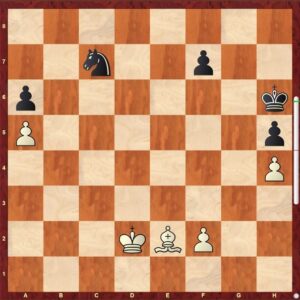
The Bishop is absolutely dominating. It attacks both weaknesses on a6 & h5. The black King & Knight have to stay where they are to protect the weak pawns. The White King simply marches to b6, then white takes on a6 and Queens the pawn.
Note that without the pawn-pair on a5&a6 the position would be an easy draw!
Bishop Outside Of The Pawnchain
The more pawns are on the board, the bigger the chance that your own & your opponent’s pawns will reduce the scope of the Bishop. Make sure to place your Bishop OUTSIDE of your pawn chain whenever possible.
The London System is a great modern example of that. Before fixing the pawn chain with d4, e3, c3 (all on dark squares), you move your Bishop OUTSIDE of the pawn chain to f4. Like this, your Bishop is not hindered by your own pawns and has a nice diagonal (h2-b8 Diagonal).
If you compare it to the less popular Colle System, the difference is huge. The pawn structure is the same (d4, e3, c3) but the Bishop is INSIDE the pawn chain. That means you basically bury your Bishop alive… Please don’t do that.
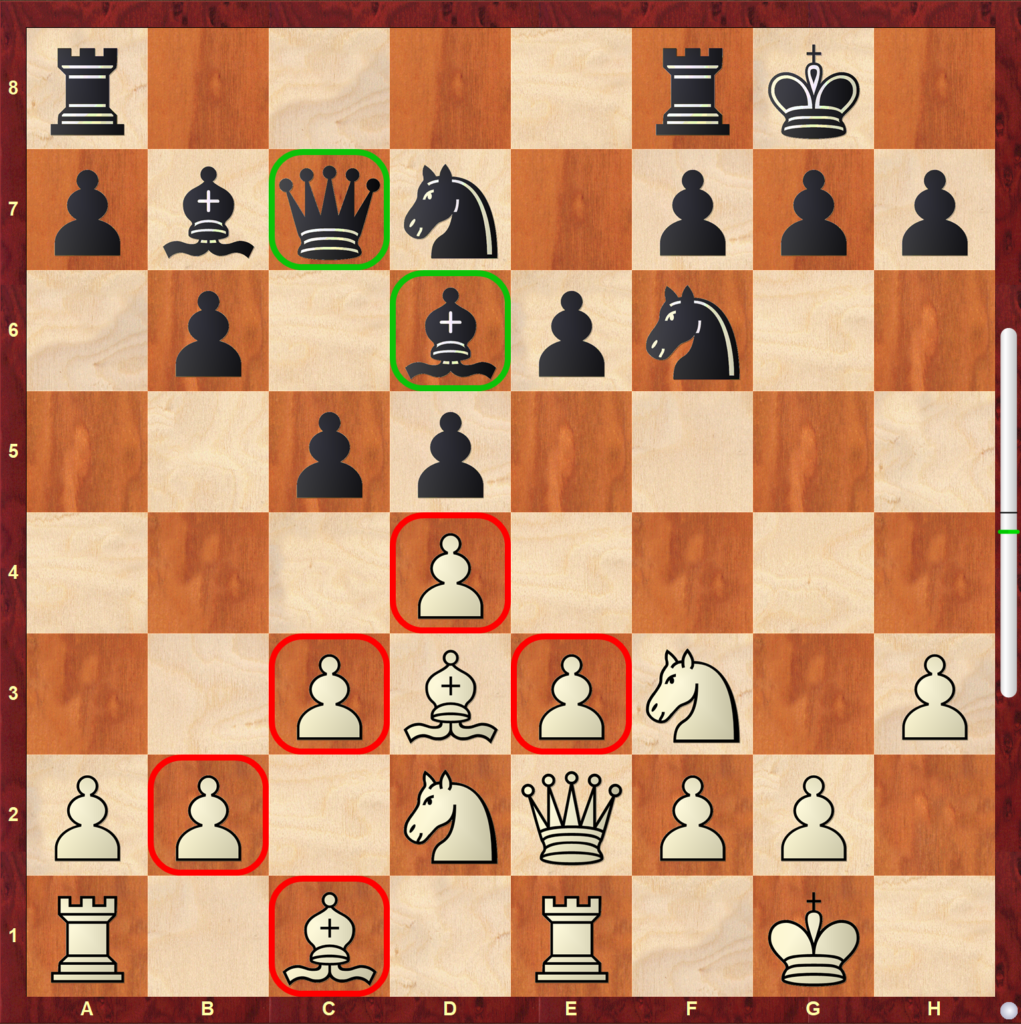
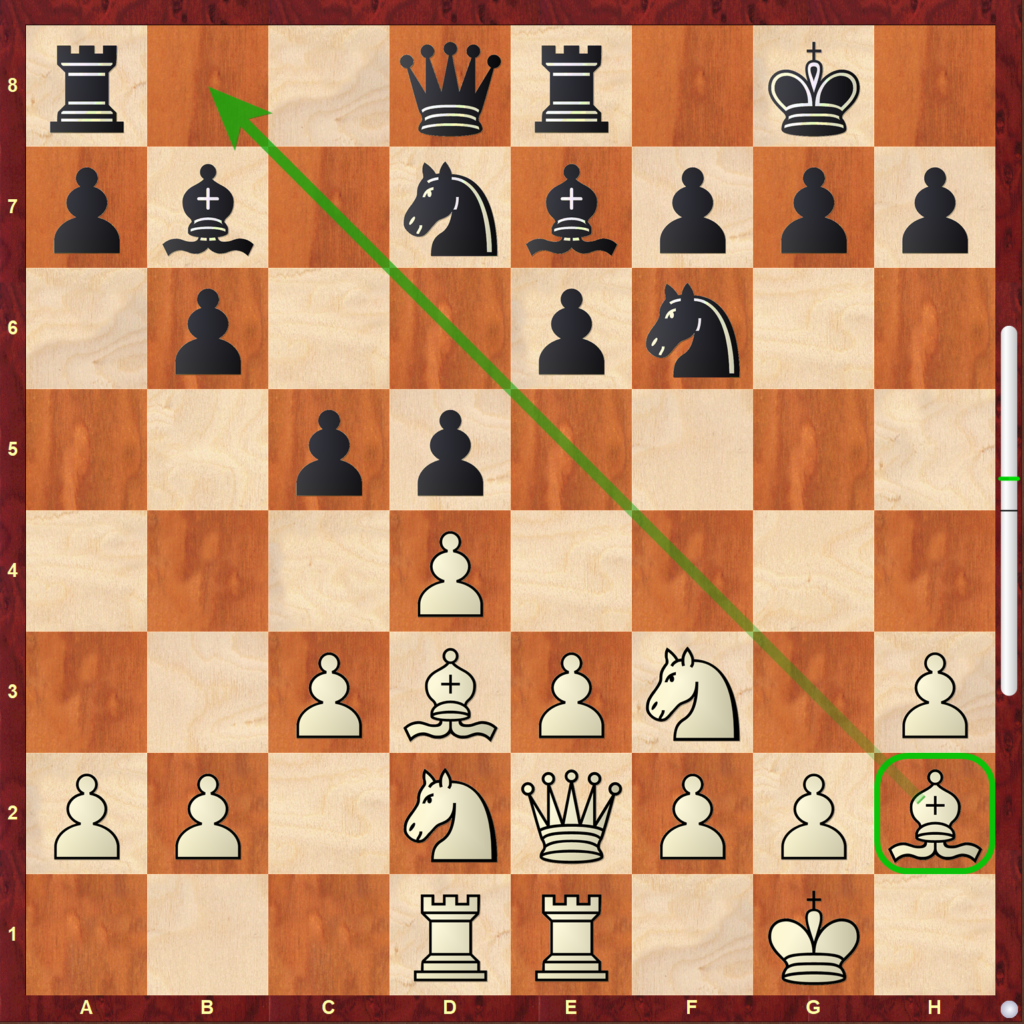
The c1 Bishop often is forced to go to b2, but even there his scope is very limited. The absence of the Bishop on the h2-b8 Diagonal also allows black to activate his pieces more easily (Bd6, Qc7). On the other hand, the h2 Bishop controls a very important Diagonal and couldn’t care less about the pawn structure b2-c3-d4-e3 being on his color. He is outside and enjoying his life.
Another great example of such a sad Bishop is the French defense. This is one of the major reasons why Amateurs & Beginners should not learn the French Defense as the first opening. When you get more experienced you will be able to break some rules temporarily. But in the beginning, it is important to play open positions with logical developments for your pieces.
In fact, one of my biggest regrets is that my childhood Coaches gave me the French as the first opening. I did have amazing results with it, but I do believe I struggled more in open positions until the end of my career because I never developed a natural feeling for them.
Place Pawns On Opposite Color Of Your Bishop
In case you only have one Bishop left, you should place the pawns on the OPPOSITE color of your Bishop.
Why?
Because your Bishop has one big shortcoming: it can only control 50% of the squares. By placing your pawns on the opposite color, you make sure that you at least control some important squares on both colors.
Additionally, you will not obstruct your own Bishop with your pawn and basically force your opponent to put his pawns on the color of your Bishop. These pawns will be an easy target for your Bishop throughout the game.
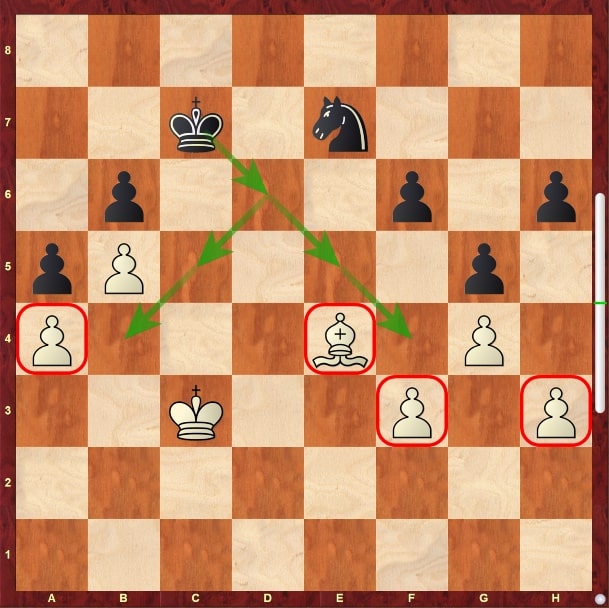
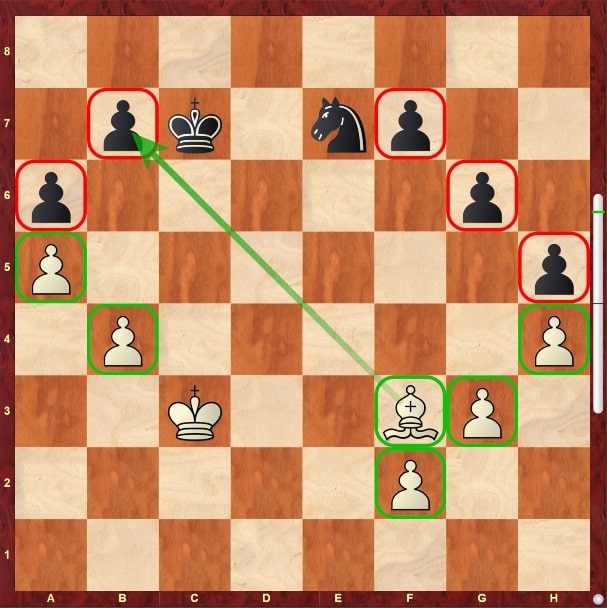
Look at the difference between both positions. The only thing I did was modify the pawn structure. On the left, the white Bishop does not have a single target! The lack of pawns on dark squares also gives the black king some nice entry points.
Even though the position is objectively still a draw, white must clearly fight for it. On the right side, the Bishop works perfectly with his own pawns. The black king has no way to enter the white’s camp and needs to protect the b7 weakness. Again the white King will enter the position and decide the game!
Bishop Pair
The Bishop pair is one of the most powerful weapons in Chess. As you know, a Bishop is limited to one color. That is why you prefer having both Bishops help each other out.
This not only turns into a better defense of your weakened squares but can lead to devastating attacks as well. One amazingly beautiful attacking idea is the so-called Lasker double Bishop sacrifice. To rip up the opponent’s King, second World Chess Champion Emanuel Lasker sacrificed both his Bishops.
He then executed the Black King with his Queen and Rooks. I thought of exactly such attacks when I wrote in my Beginner strategy article that “light pieces lead the way in the attack, and then the heavy pieces join in and it is game over”.
Here is how Lasker did it. If you want to watch the full game, then check out this video.
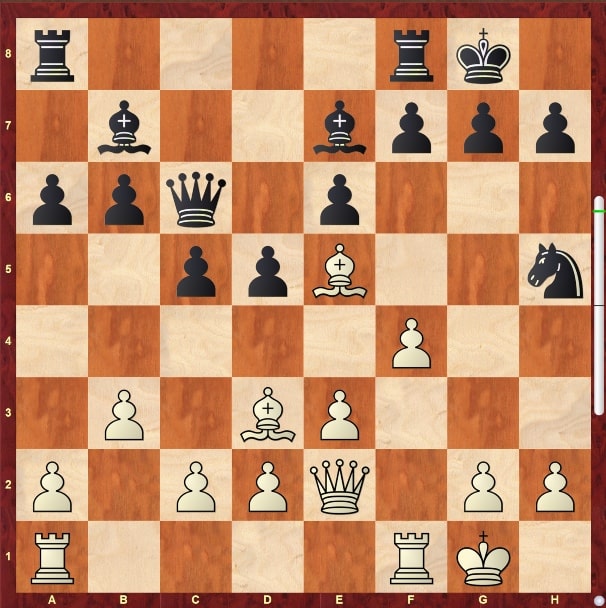
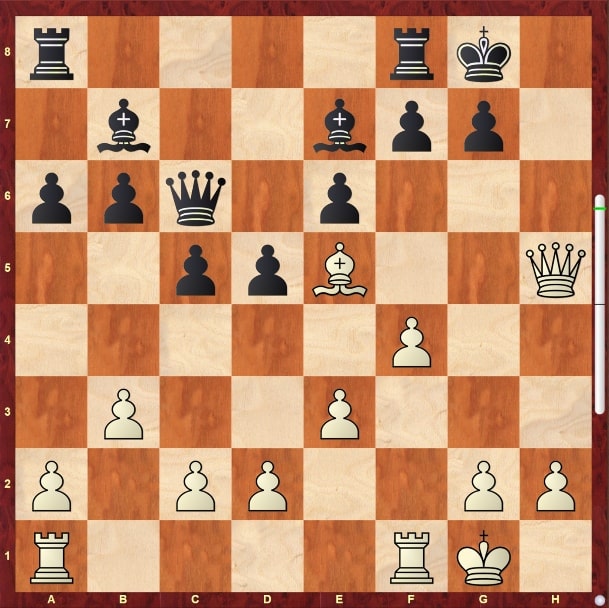
Instead of taking back on h5, Lasker sacrificed the first Bishop with 15.Bxh7+! after Kxh7 16.Qxh5+ Kg8 the attack seems insufficient. But Lasker planned the second sacrifice: 17.Bxg7! Kxg7 18.Qg4+! (forcing the Black King on the h-file) Kh7 19.Rf3! and black had to give up his Queen with e5 to survive some more moves. White is winning.
It is only logical now that you should NOT exchange a pair of Bishops if you have still both and your opponent only has one Bishop. Try to hold on to the Bishop pair as long as possible. Sometimes it is not possible and there obviously are exceptions. But it is a good basic rule to live by.
The Knight
The Knight, also called Horse(y), or Octopus (because it controls 8 squares), is the most tricky piece in Chess. It is also the only one that can jump over other pieces. I bet you all already fell for some dirty knight fork. We all know that feeling…
Closed Positions
The Knight feels more abt in closed positions. Because of its ability to jump over pawns & pieces, it can have a devastating effect when all other pieces are blocked by pawns. While the Bishop is just a part of the Queen (the Queen is Bishop+Rook combined), the Knights movement is truly unique.
The most important factor for a strong knight is stability. This stability depends on 2 factors:
- You like to defend your Knight with your own pawn
- Your opponent will try to kick back your Knight with this pawns
The dream scenario is:
Get your Knight on a square where it can’t be kicked back by opposing pawns and protect it with your own pawn. A great example of the domination of Knight over Bishop can be found in Sicilian Sveshnikov positions. From the early start, white has this super nice square on d5.
If White manages to exchange the right pieces and remain with a Knight on d5 vs the dark-colored Black Bishop, he achieved positional domination.
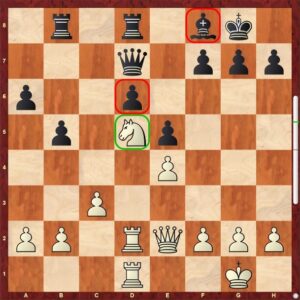
The big downside of the Knight is its short-range movement. That is why you need to make sure the Knight is in the center of the Board!
A Bishop o b1 can be great because it can control squares up to h7! A Knight on b1 is most likely very bad, as it only controls 3 squares far away from the opponent’s camp.
Endgames With One Flank Only
There is one case in which the Knight is mostly superior to the Bishop, even if few pawns are on the Board: endgames with pawns on only one flank.
In this case, the Knight does not need to travel long distances to cover the whole board. And it is superior to the Bishop because it can play on both colors of the Board! The Bishop’s strength of long-range control does not come to show.
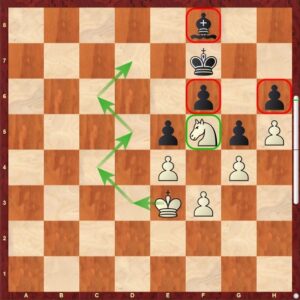
White has achieved everything he wants:
- Pawns only on one side
- A stable Knight position on f5
- The pawns of black are on the same color as the Bishop
- The pawns of white are on the opposite color as black’s Bishop, thus avoiding counterchances
- The white King has a nice route to enter the game
Because of Zugzwang, black will be forced to concede square after square to the white King and white will pick up all the pawns.
Knights Don’t Really Work In Pairs
Other than Bishops, Knights are not really meant to work in pairs. There are some absolutely stunning mates if both Knights work together. But this is seen very rarely in real games. More often you see cases where one side has ONE good square for a Knight. If this is occupied, then the other Knight has no real place to go.
Yes, Knights can connect and protect each other. But as stated above, in most of these cases one Knight is doing a brilliant job and the other one is just pretending to help. Like the guy in a group-work in school that just silently sits there and doesn’t do anything. He is there, but not really needed nor wished for.
That is why, more often than not, you see a single Knight doing big damage and not both Knights working together.

Situations With More Pieces On The Board
Now that you know the strengths and weaknesses of both pieces, it is time to get into more complex situations. I will still try to keep it as conceptual and simple as possible. I just want to give you some basic insights you can use as guidelines in future games.
2 Bishops + Knight VS 2 Knights + Bishop
This is usually the perfect scenario for Bishop lovers.
Why?
Because they keep their Bishop pair AND have a Knight on the Board. That is why Bishop lovers try to hold on to this situation as long as possible. On the other hand, if you play with the 2 Knights and Bishop, you need to try to exchange one piece.
You have 4 possible exchanges, out of which 3 are desirable:
- Bishop for Bishop (eliminating the Bishop pair)
- Knight for Knight (making sure you don’t have a useless Knight and depriving your Opponent of his Horsey power)
- Knight for Bishop (re-installing status Quo)
- Bishop for Knight (very seldolmy a good idea, only in closed structures with fixed pawns a good idea)
So far this should sound logical. But now comes a pattern I did not learn until I was an International Master. But it is super logical and easy to apply: Whenever you play with 2 Knights + Bishop, you should play on the color of your Bishop. Whenever you play with 2 Bishops and Knight, you should play on the color of the Bishop your opponent does NOT have.
I could follow up with some hugely complex explanation.
But actually, it is pretty simple (not easy!!!). With 2 Knights + Bishop, you can control the color of your Bishop 3x, while you can only control the color opposite to your Bishop 2x. You should use that sort of power play on one color! On the other hand, the Bishop pair + Knight controls both colors 2x. But the Bishop usually controls more squares than a Knight.
So instead of playing the Box-Play on one color, you should play some kind of mini-power-play on the color your opponent can only control with knights. Whenever you have that imbalance again, you can also ask yourself: how can I use this imbalance in my favor? You will see that in 90% of the cases, this means playing on the right color.
Knight + Queen / Bishop + Rook
Another good rule of thumb is that the Knight is working nicely together with a Queen, while the Bishop likes to work with a Rook. As the Queen is a Rook + Bishop combined, it usually profits more from the additional resources a Knight brings than having a Bishop to its help.
That means that you try to keep the Queen on the Board if you have the Knight and try to exchange the Queen if you have the Bishop. On the other hand, you try to exchange Rooks if you have the Knight, and you try to keep Rooks if you have the Bishop.
These are the basic rules of thumbs that do not always apply. Even though many generations have taught chess in that way, the statistics don’t fully prove that point.
So why do I still write about that?
Even if it is not backed up 100% by statistics,, it is surely not wrong.
Having some basic rules of thumb to guide you through a game will give you a big advantage. While your opponent will try to figure out move by move what to do, you at least have some guidelines to follow.
The stronger you get, the more you will start to feel points when the opposite of the rule will be true. But the first step is to learn a rule, only then you can start to break it whenever you start to understand the rule.
Conclusion
Knight vs Bishop is a difficult imbalance that can be advantageous for either side.

Whenever you get the chance to exchange a Bishop for a Knight or the other way around, try to shortly think about the advantages and disadvantages of such a trade.
Remind yourself of playing on the right color of the board! If you only take one thing from this article, then it is this:
When you have the knight, play on the opposing color of the Bishop you don’t have. When you have the Bishop, then play on the color of the Bishop your opponent doesn’t have.